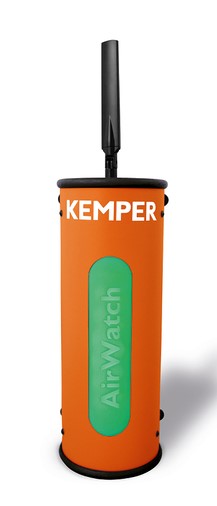Air quality measurement
We frequently encounter a way of thinking where people look up at the ceiling of the welding shop and comment on the visible layer of smoke hanging there. It’s easy to jump to the conclusion: “We have poor air quality.”
However, the actual situation at normal breathing height may be completely fine — fresh air is being supplied in regulated amounts, and the filtration systems are working as intended at lower levels.
That visible smoke layer forms as welding fumes rise due to their heat energy and typically accumulate at a height of around 3.5 to 6 meters. The problem is often more aesthetic than hazardous. Trying to eliminate that layer using only suction — especially in wider workshops — is simply impractical. Even so-called “push-pull” systems (with horizontal air being pushed from one wall and extracted from the other) start to encounter challenges once the room width exceeds 10 meters.
Ceiling-mounted exhaust fans are not a solution either — they just waste money in the form of electricity and lost heating energy!
We offer simple and effective solutions to eliminate even that smoke blanket.
The major health risks posed by welding fumes come from ultrafine particles, most of which are smaller than 1 micrometer — invisible to the naked eye!
That’s why measuring air quality and making necessary improvements is critically important.
We always begin the site assessment with a visit. During this visit, we can arrange for a separate air quality measurement, if desired. This provides rapid, accurate insight into the amount and size of airborne particles in the facility. Knowing the exact particle material is typically unnecessary — in these environments, you can usually figure that out just by turning your head.
The device we use for measuring air quality is the KEMPER AirWatch.


